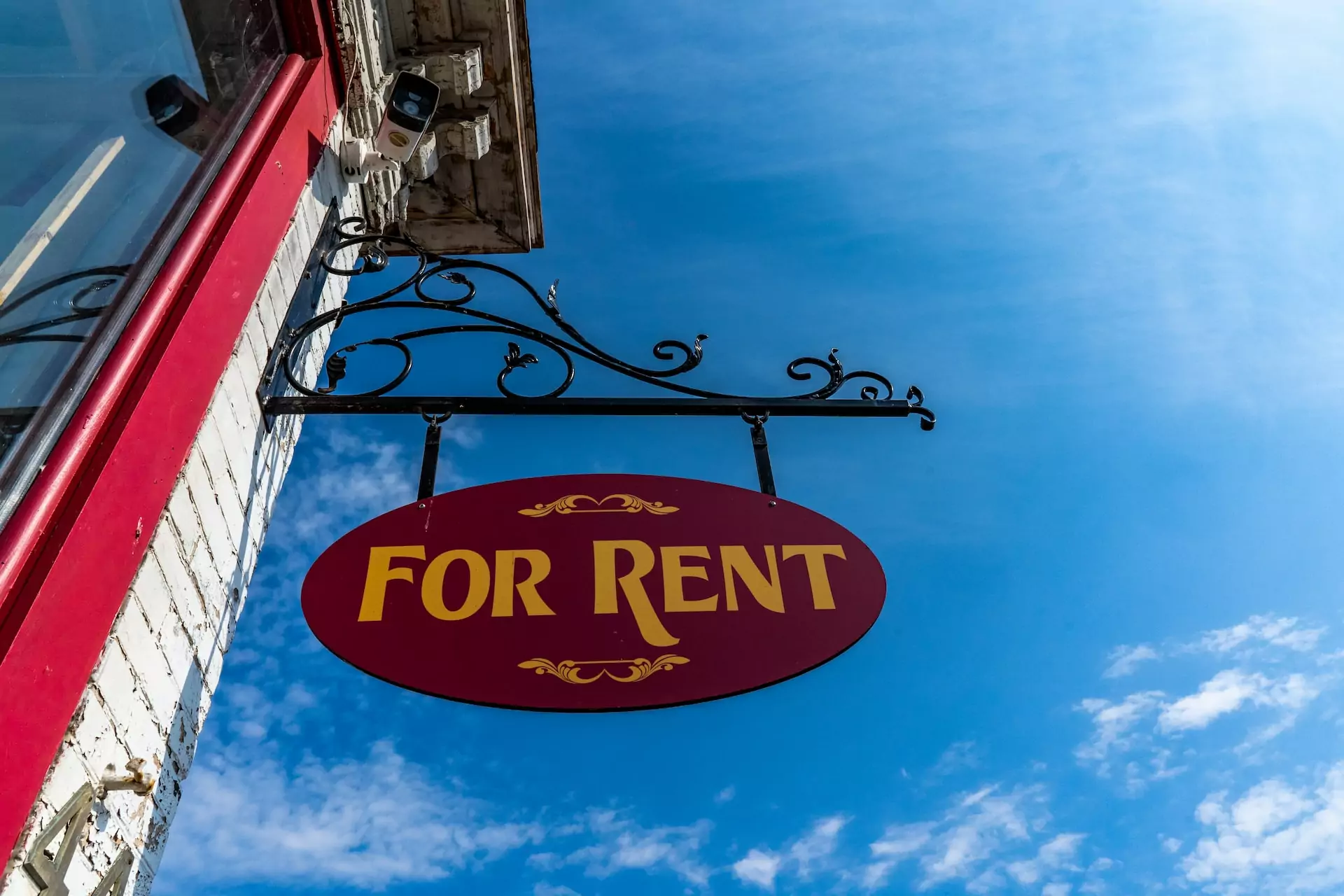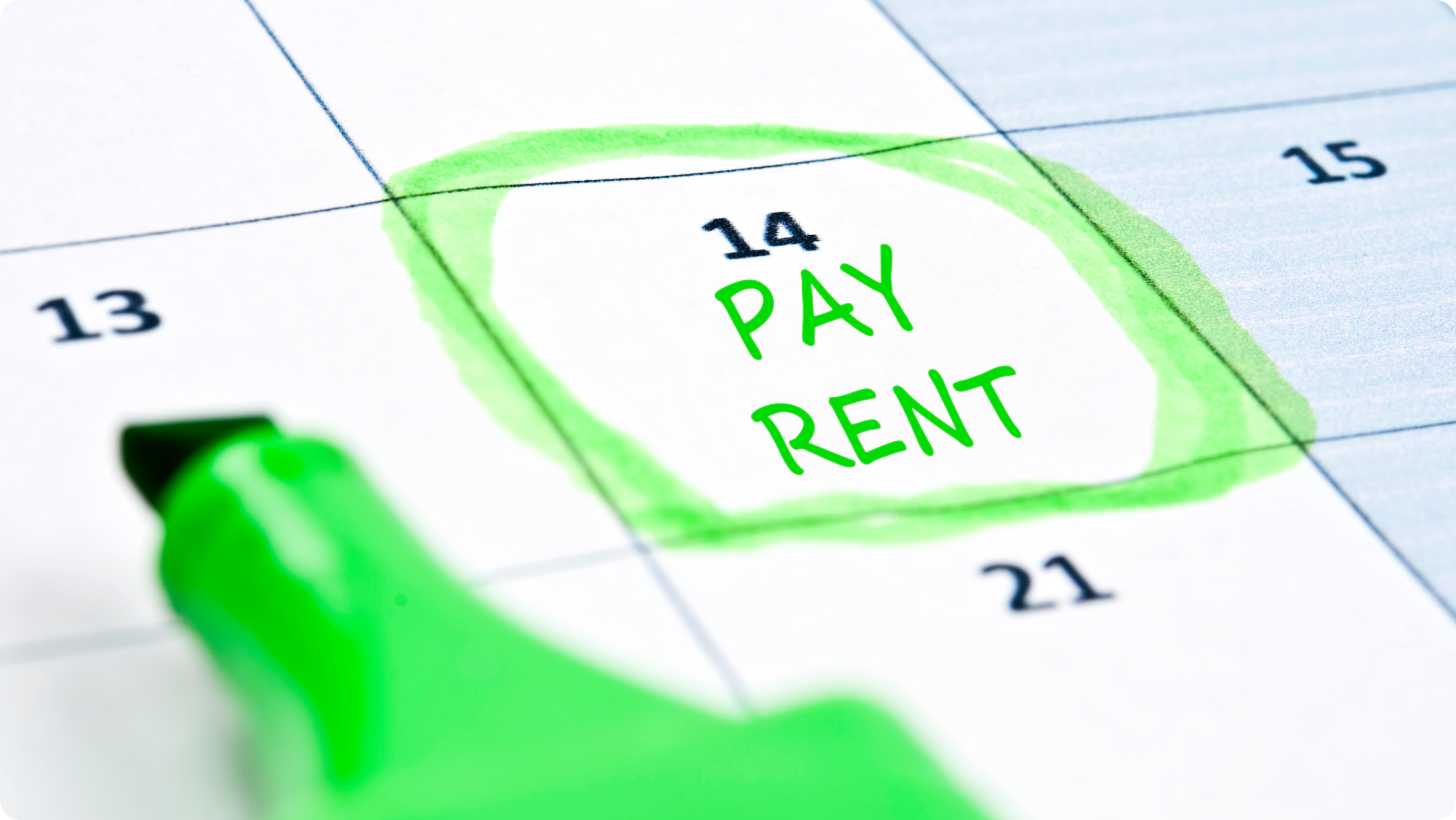When tenants move in or out in the middle of the month you may need to prorate rent so the price reflects the number of days they’re living in the property.
This guide will walk you through everything you need to know about how prorated works, when to use it, calculation methods, and best practices to simplify the process.
Key takeaways
- Prorated rent adjusts payments for tenants who occupy a property for part of a rental period.
- Common scenarios for prorated rent include moving in mid-month, early move-outs, lease adjustments, and situations where part of the property becomes unusable.
- Prorated calculation methods include the daily rent method, 30-day standard, or square footage method.
- Prorated rent is due at lease signing, before the last day of a lease term, or when renewals or adjustments result in a partial rental period.
- Consider prorated rent laws, refunds, additional fees, and weekend or holiday move-ins when adjusting rent payments.
What is prorated rent?
Prorated rent is a partial rent payment based on a portion of a rental period. For example, a tenant could move in on the 10th of a 30-day month. Instead of paying for the whole month, the tenant would be charged prorated rent based on the number of days they’re living in the unit. In this case, they would pay rent for the remaining 20 days.
When is prorated rent used?
Prorated rent may apply when a tenant moves in or out mid-month, when you or the tenant terminates a lease early, or when there are changes in the terms of the lease. You may also need to prorate the rent if a portion of the property becomes unavailable to the tenant, such as if a bathroom is closed for renovation.
Common prorated rent examples:
- Move-in mid-month: When tenants move in after the 1st of the month, prorated rent adjusts their payment to cover only the days they occupy the property. If rent is $2,000 and the tenant moves in on the 10th, they’d pay $1,400 (70% of the month).
- Early move-out: Tenants leaving before the lease period ends often request prorated rent for the days they’ve occupied the unit. If rent is $1,000 and a tenant moves out on the 16th, their prorated monthly rent would be $500.
- Lease adjustments: Prorated rent is useful during lease renewals or extensions that don’t align with the monthly cycle. If rent is $1,500 and a tenant stays 12 days after their lease ends, their prorated rent for the partial period would be $600 (40% of the month).
- Partial property use: If a portion of the rental becomes unusable—like during renovations—landlords may prorate rent based on the available space. If monthly rent is $2,000 and a renovation makes 25% of the apartment unusable for 10 days, the prorated rent amount for this period is $500 (regular $666.70).
Generally, landlords don’t have to prorate rent if a tenant signs a lease for the first of the month and chooses to move in later. Check your lease agreement to see whether you’re obligated to prorate in certain situations.
When is prorated rent due?
Prorated rent is typically due when a tenant moves in, but that’s not always the case.
- Prorated rent due at lease signing: Prorated rent moving in mid-month is usually collected at lease signing. For example, if a tenant moves in on the 10th, their prorated rent for the remaining days of the month is often due immediately to secure the lease.
- Prorated rent due at lease end: Prorated rent moving out mid-month is typically due before the last day of the lease term. If they prepaid for the month, they’ll receive a refund for unused days.
- Prorated rent due at lease renewal: When a lease renewal or adjustment results in a partial rental period, prorated rent can be due either at the start of the adjusted lease or as a credit/refund based on the terms.
Methods to calculate prorated rent
Depending on the scenario, there are a few methods you can use to calculate prorated rent.
Daily rent method
Using the daily rent method, you divide the monthly rent by the number of days in the month:
- $2,000 monthly rent / 30 days = $66.67 per day
- Unit is occupied for 10 days: $66.67 per day x 10 = $666.70
30-day month standard
Use 30 days as a standard month for prorating rent, regardless of the actual number of days. For example, if the unit is occupied for 15 days, you would divide rent by 30 to get the prorated amount, even if the month has 28 or 31 days.
While more straightforward, this method may slightly overcharge or undercharge depending on the month:
- $2,000 monthly rent / 30 days = $66.67 per day
- Unit is occupied for 15 days: $66.67 per day x 15 = $1,000.05 ($1,071 for 28 days)
Square footage method
If part of the property is unavailable, calculate rent based on usable square footage. In this case, you would divide the square footage available by the total square footage of the unit to get the prorated rent:
- Total rent: $2,000 for 2,000 sq. ft.
- Unavailable space: 500 sq. ft.
- Usable space: 1,500 sq. ft. = 75% available
- Prorated rent: $2,000 x 75% = $1,500
Special considerations in prorated rent
Prorating rent isn’t always straightforward. Here’s what to keep in mind when making rent adjustments:
- Weekend or holiday move-ins: If move-in dates fall on weekends or holidays, non-business days, it’s not usually necessary to prorate rent unless legally required. Tenants can move in slightly early or late without adjustments.
- Prorating utilities and additional fees: When you prorate the rent, you may also need to prorate the amount you charge for utilities or other fees for rental property expenses. If a tenant occupies the unit for half the month, utility charges should reflect their actual usage.
- Prorated rent laws: While most states simply enforce rent proration lease terms, some have specific rules for prorating rent. For example, prorated rent laws in California use a 30-day standard for prorated calculations. Always review local regulations to ensure compliance.
- Prorated rent refunds: Tenants who vacate early are sometimes owed a refund for rent paid in advance. If rent is $1,000 and the tenant leaves on the 27th, the prorated rent refund is $100 (based on a 30-day month). Use a fillable rent ledger or online automatic rent collection software (like Baselane) to keep track of prepaid rent for refunds.
Some states consider any rent paid six months in advance a deposit. If you collect the last month’s rent when signing a lease, this amount won’t be included in a prorated rent refund. You’ll need to follow deposit laws and keep it in a separate security deposit account.
How does prorated rent work in different lease scenarios?
The method you use to prorate the rent, or whether you choose to prorate the rent at all, may depend on the type of lease agreement.
- Standard residential leases: Prorated rent commonly applies in residential leases, especially for mid-month move-ins or move-outs. Include clear clauses in your lease agreements to outline when and how proration applies.
- Short-term leases: Short-term rentals like Airbnb typically don’t prorate rent but may issue refunds for early departures. For month-to-month agreements or lease terms shorter than six months, prorated rent often applies to partial-month stays.
- Commercial leases: Prorating commercial leases can be more complex, often involving annual rent calculations and adjustments based on square footage or lease terms. A 1,000 sq. ft. retail space at $50/sq. ft. has an annual rent of $50,000, prorated for 10 months would be $41,665 (83.3% of annual rent).
Ask a lawyer how to write a lease agreement prorated rent clause to make sure you’re covered for any scenario.
Common mistakes and how to avoid them
Mistakes with prorated rent can lead to disputes or financial losses. Here’s how to avoid them:
- Missing lease clauses: Clearly explain prorated rent in a lease agreement. Specify whether or not you will prorate rent and under what conditions. This prevents confusion and disputes over partial payments.
- Calculation errors: Double-check your calculations, especially during months with irregular days (like February), to avoid overcharging or undercharging.
- Ignoring fees: Remember to include any additional fees in prorated rent, such as utilities, parking, or amenities. A rental property expenses spreadsheet can help you keep track of these fees.
Best practices for prorating rent
Knowing how to figure out prorated rent isn’t always easy. Here are some best practices to help simplify the process:
- Clearly outline prorated rent in lease agreements
- Understand local laws for prorated rent
- Use the correct formula to calculate daily rent
- Consider leap years when calculating daily or annual rent
- Factor in any grace periods for rent payments
- Double-check calculations for accuracy
- Communicate how proration works and when it applies to tenants
- Include any additional fees in prorated rent
- Document prorated rent in writing
- Keep records and issue receipts for rent payments
Bottom line
Prorated rent is the best way to adjust payments fairly when tenants only occupy a property for part of a rental period. Once you know how to handle prorated rent, the next step is setting up online rent collection with Baselane.
Save hours every month and increase on-time payments with property management rent collection software that automates rent, reminders, and fees. Plus, with built-in banking and accounting, you’ll have everything you need to confidently manage prorated rent.
Create a free account to screen tenants, e-sign leases, collect rent, and more — all in one place with Baselane.
FAQs
Prorated rent refers to a partial rent payment that is calculated based on the number of days a tenant occupies a property during a rental period. For example, if a tenant moves in on the 12th, they’ll only pay rent for the remaining 18 or 19 days, depending on whether prorated rent is 30 or 31 days.
Prorated rent for the first month is the adjusted amount a tenant pays when moving in after the first day of the rental period. For example, if rent is $2,000 per month and a tenant moves in on the 10th of a 30-day month, their first month’s prorated rent would be $1,400 for the remaining 21 days.
Rent is prorated at closing by dividing the monthly rent by the number of days in the month to determine the daily rent amount. The seller and buyer then adjust for the number of days each party is responsible for the property. For example, if the closing occurs on the 15th, the seller keeps the rent for the first 15 days, while the buyer receives the rent for the remaining days.
Prorated rent is not always required and depends on local laws and lease agreements. For example, in California, landlords are often required to prorate rent when tenants move in or out mid-month. Always review your local laws and lease terms to determine your obligations.
Stress-free rent collection
- Easy setup for landlords and tenants
- Fast payments
- Automated reminders and late fees

Don't miss these

When Should a Landlord Increase Rent
As a landlord, regularly adjusting rent prices is essential to ensure your property remains competitive and covers rising ownership costs. However, it̵...
15 August 2024
Monthly Rent vs. Annual Rent: Pros and Cons
As a landlord, there’s nothing more important than collecting rent payments. But having to chase down tenants each month can be a lot of work. Landlords ...
17 December 2021
6 Tips to Make Rent Collection Easier and Faster
Being a landlord is a great way to earn rental income. However, that income isn’t exactly passive. A recent report says nearly 80% of properties owned by...
23 December 2022



